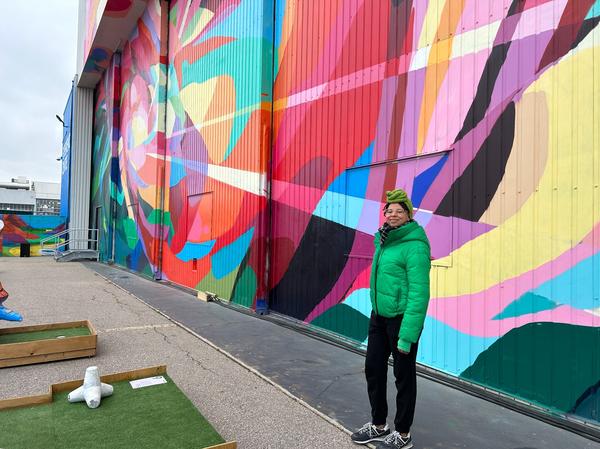

As cities form a sea of gray, full of concrete walls and glass windows, artists are who provide communities with pops of colour, vibrancy and character through outdoor murals.
The Greater Toronto Area (GTA) is home to thousands of public artworks with Toronto housing 1,500 of them as of 2022. Various cities in this region have also developed initiatives specifically to bolster the presence of street art and provide artists a platform.
However, many misconceptions surround street art as according to a 2018 study from CeROArt — an arts web journal — the art form is often mixed up with and considered to be equivalent to vandalism. There is also a stereotypical archetype associated with a street artist, most often thought of as “looters” as per the same study.
Combatting these stereotypes means to take control of the narrative. In the GTA, many Black, Indigenous, and people of colour (BIPOC) artists have taken it upon themselves to try and change the status quo. BIPOC women especially use their intersectionality to develop their artwork and express themselves to the masses.
Jasmine Vanstone is a Jamaican-Canadian multidisciplinary artist who works with various mediums including collages, ceramics and murals. Her first-ever large scale mural titled Float — and the journey behind its creation — is highlighted below.
Although Vanstone lightly treaded in the world of art since her childhood, she began her professional journey far later. After graduating from York University in the visual arts and art history program, she still did not feel like an artist until after she joined Vibe Arts — an arts-based charity providing education and mentorship.
“Through their mentorship program, I was connected to more Black artists and then had my first exhibition,” said Vanstone. “After that experience and building community there, I felt that I could really call myself an artist and it led me to opportunities to connect with other artists and collaborate on projects.”
Vanstone’s first mural was painted in Kensington Market after she was approached by fellow artist Curtia Wright and together, they created a ground mural which “highlighted black women and non-binary people to share a message on what the future could look like when there's no discrimination or barriers.”
With Float, Vanstone was a mentee to Jacqui Comrie and learned various techniques with a mural of this scale. Simultaneously, she said she was overcome by imposter syndrome — a psychological experience of when one doubts their abilities and successes.
“A lot of BIPOC individuals always have a sense of imposter syndrome because of the barriers that they face, as well as trying to overcome the barriers,” she said. “I was stressing on myself to make sure [the mural] was perfect.”
Vanstone said one of her biggest barriers specifically within mural art is needing connections and references in order to gain any type of experience. Her way of overcoming these barriers: seeking other BIPOC women with similar backgrounds and shared lived experiences.
Lynn Taylor is an Indigenous artist, part of the Oneida Nation of The Thames reserve in Ontario (Turtle Clan). On the side of an LCBO in Port Credit — a prominent neighbourhood in Mississauga — she painted Creation Story with Sky Woman depicting the Haudenosaunee story of Turtle Island’s beginnings
Taylor told the story of creation saying it began after the Sky Woman fell through a hole in the sky and was swept up and saved by the birds who saw her descent.
The birds placed her on the back of a large turtle and from there, all the animals gathered and tried to find a way to get her land. Many of them tried to find soil by swimming to the bottom of the water and eventually, the muskrat was successful.
The soil was placed on the turtle and “the Earth just spread all over the turtle into what we call Turtle Island and then people started developing.”
Nature is a large part of what drives Taylor’s work and she believes that Indigenous or not, nature is everyone’s origin and should be acknowledged as such.
“Nature is a big part of where I come from, or where we come from as people, and it's important to bring that into the work,” she said.
Taylor is also part of the group The Eagle Spirits of the Great Waters, an organization dedicated to the learning, teaching and creating space for Indigenous arts and culture practices as well as stories.
Ultimately, she sees her work and status as an artist as a way to seek out other Indigenous talent — something she focuses on at the Eagle Spirits.
“There's a lot of Indigenous artists that are very shy about getting out here,” Taylor said. “We're trying to pull them out and bring them out.”
So what do murals provide the cities they reside in?
To Vanstone, they foster togetherness and furthers their reach to everyone regardless of whether it's a resident looking to learn more about art, people looking to amplify their voice or tourists attracted to the eye-catching designs splattered all over the city.
“There's a lot that public artwork does for a city, but it just takes time to understand the worm's eye view or the bird's eye view, whichever,” Vanstone said. “If you're an artist or a public planner, what [having a mural] does to impact the neighborhood.”